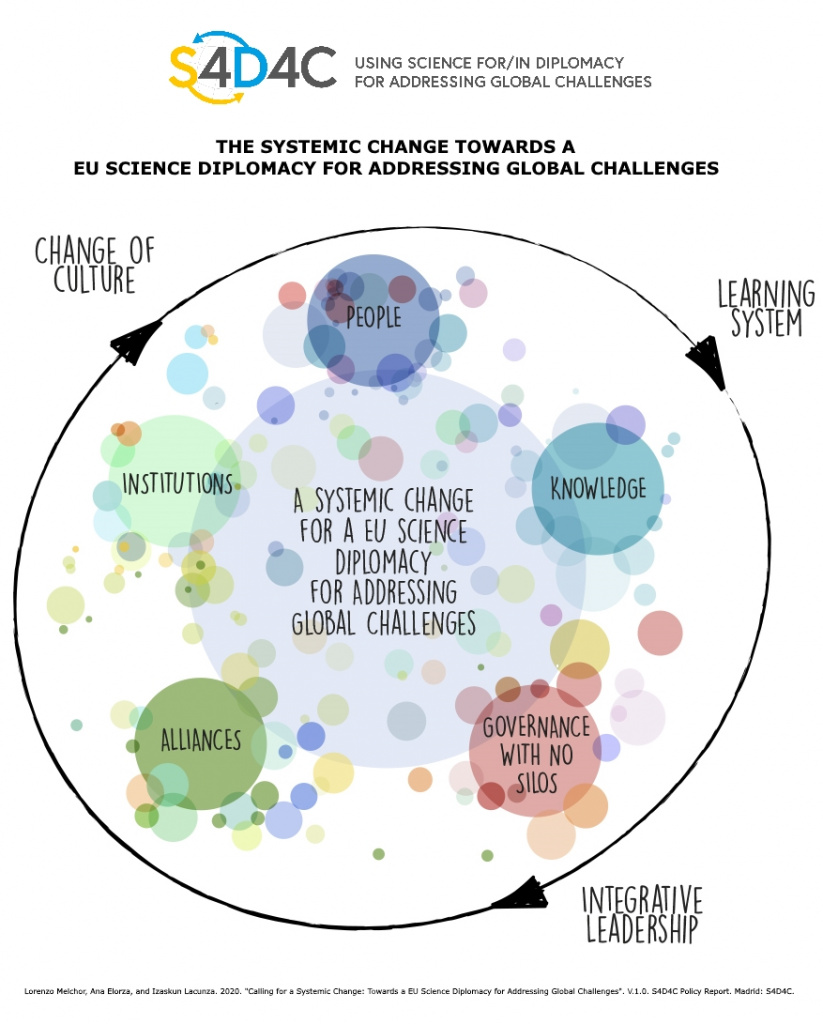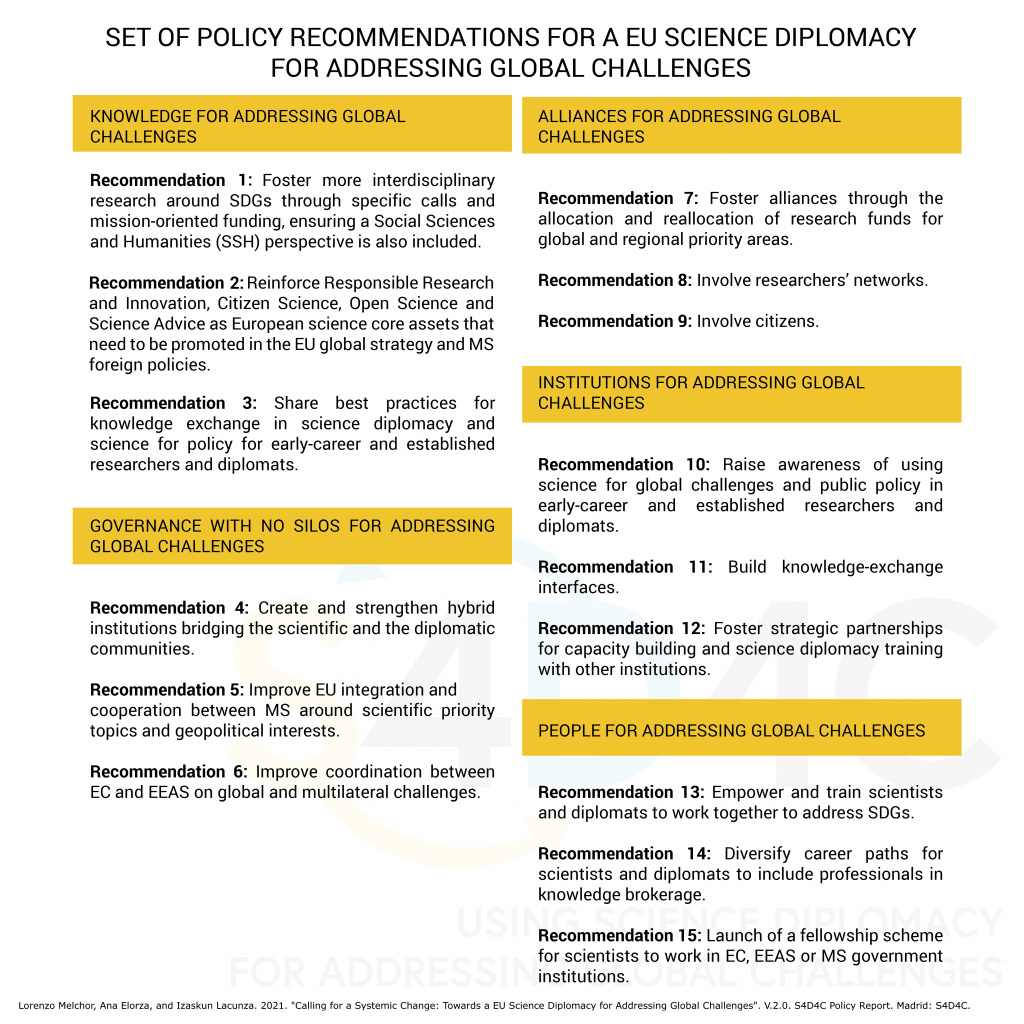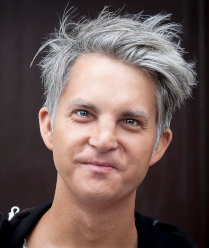4.4.5 First Research Insights into EU Science Diplomacy
In recent years, a lively community of policy makers, practitioners and researchers across Europe have been trying to identify the opportunities, challenges and barriers for EU Science Diplomacy to flourish. Among this ecosystem, we will devote some time in the next topic to the so called “European Science Diplomacy cluster”, three complementary European projects that are trying to outline a EU science diplomacy strategy.
Before that, we will summarise some findings of researchers and experts on where EU science diplomacy currently stands and some recommendations around how to push it up to the next level.
For instance, Flink and Rungius (2018), identify three very concrete challenges for the EU science diplomacy:
- Understanding of science diplomacy as a fluid concept as a first step to structure its governance framework that need to contain (at least) three elements: the governance arrangements, the actors’ landscape, and the facto practices.
- The need for coordination among MS and the EC. Some practitioners describe a competition scenario sometimes where EU and MS representatives in third countries operate in competition to one another.
- Capacity building and recruiting of science diplomats. Science diplomacy calls for training to increase the skills of current and future professionals who work at the intersection of science and foreign policy.
From another perspective, some other authors reflect on how the European Commission needs to find its added value over the science diplomacy strategies of MS. For example, a joint approach by the Commission and Member States would prevent third countries from free-riding and cherry picking a preferred mode of collaboration, which is a situation that many interview partners find alarming at present.
In addition, smaller Member States could benefit from the EU acting as a door-opener in S&T negotiations with emerging science powers. In any case, a new independent EC science diplomacy must accommodate for the largely diverging agendas, claims, and resources of Member States (Rüffin 2019).
Also interesting is the search for the EU’s motivations for developing its science diplomacy. On the one hand, one of the motivations would be the EU aiming to be considered as a “normative power”, where the EU external science activities would be motivated by the desire to promote its norms and values in its attempts at co-operating with third countries. On the other hand, another motivation—not necessarily incompatible—would be the EU aiming to be considered as a “market power”: a large regulated market that wants other actors to adhere to levels of regulation similar to its own or to behave in ways that generally satisfy EU policies and regulations. According to San Román and Schunz (2017), the Union clearly seems to qualify at the same time as market and normative power in the external science policy domain.
Van Langenhove (2017) identifies two major challenges for the EU science diplomacy:
- how to carve out a specific role for the EU that complements the science diplomacy policies of its Member States and
- how to integrate that role in the EU’s overall global presence or position.
Taking these challenges into account, the author defines different strategic, operational and support tools for science diplomacy practices and two major recommendations in developing a EU science diplomacy strategy:
- supporting the member states’ science diplomacy policies and practices; and
- supporting the EU’s own Foreign and Security Policy.
Based on the annual S4D4C science diplomacy networking meetings in 2018-2019, S4D4C produced a call for action for a committed EU integrative leadership in addressing global challenges using science diplomacy (Melchor, Elorza and Lacunza 2020; 2021). The authors present a vision for the EU in which science is acknowledged as an important dimension of its foreign policy and EU science and EU diplomacy join forces to address global challenges. In the report, stoppers, warnings and drivers of science, diplomacy and science diplomacy for this vision are identified (see Topic 2.3.6 Science Diplomacy for Addressing Global Challenges: Stoppers, Warnings and Drivers). Finally, a set of recommendations around five interconnected dimensions (knowledge, governance with no silos, alliances, institutions, and people) are issued to promote a systemic change for addressing global challenges using science diplomacy (Figure 7).


What the experts think
Watch the video below to learn about the special perspective from one of the S4D4C research fellows!

Tim Flink
Postdoctoral Researcher and Lecturer in Science Policy Research and Social Studies of Science, Humboldt-Universität zu Berlin and the German Center of Higher Education Research and Science Studies (DZHW). Member of the S4D4C Research Team.
What is your vision for the European science diplomacy in the future? How does it need to be coordinated with the Member states?
| Read more! – Aukes, Ewert, James Wilsdon, Gonzalo Ordóñez-Matamoros, and Stefan Kuhlmann (2021): Global resilience through knowledge-based cooperation: A New Protocol for Science Diplomacy. S4D4C Policy Brief, February 2021. S4D4C: Vienna (Link) – de San Román, Alea, and Simon Schunz (2017): “Understanding European Union Science Diplomacy.” Journal of Common Market Studies, 56(2), 247-266 (Link) – Flink, Tim, and Charlotte Rungius (2018): Science Diplomacy in the European Union: Practices and Prospects. S4D4C Policy Brief #1 October 2018. S4D4C: Vienna (Link) – Melchor, Lorenzo, Ana Elorza, and Izaskun Lacunza (2020) Calling for a Systemic Change: Towards a European Union Science Diplomacy for Addressing Global Challenges. V 1.0. S4D4C Policy Report, Madrid: S4D4C. (Link) – Melchor, Lorenzo, Ana Elorza, and Izaskun Lacunza (2021) Calling for a Systemic Change: Towards a European Union Science Diplomacy for Addressing Global Challenges. V 2.0. S4D4C Policy Report, Madrid: S4D4C. (Link) – Rüffin, Nicolas (2019): “EU Science Diplomacy in a Contested Space of Multi-Level Governance. Ambitions, Constraints and Options for Action.” Research Policy, advance access, 27.08.2019, (Link) – van Langenhove, Luk (2017): Tools for an EU Science Diplomacy. European Commission – Directorate General for Research and Innovation. Luxembourg: Publications Office of the European Union. doi: 10.2777/911223 (Link) |

The material provided under this course is licensed under a Creative Commons Attribution 4.0 International License.